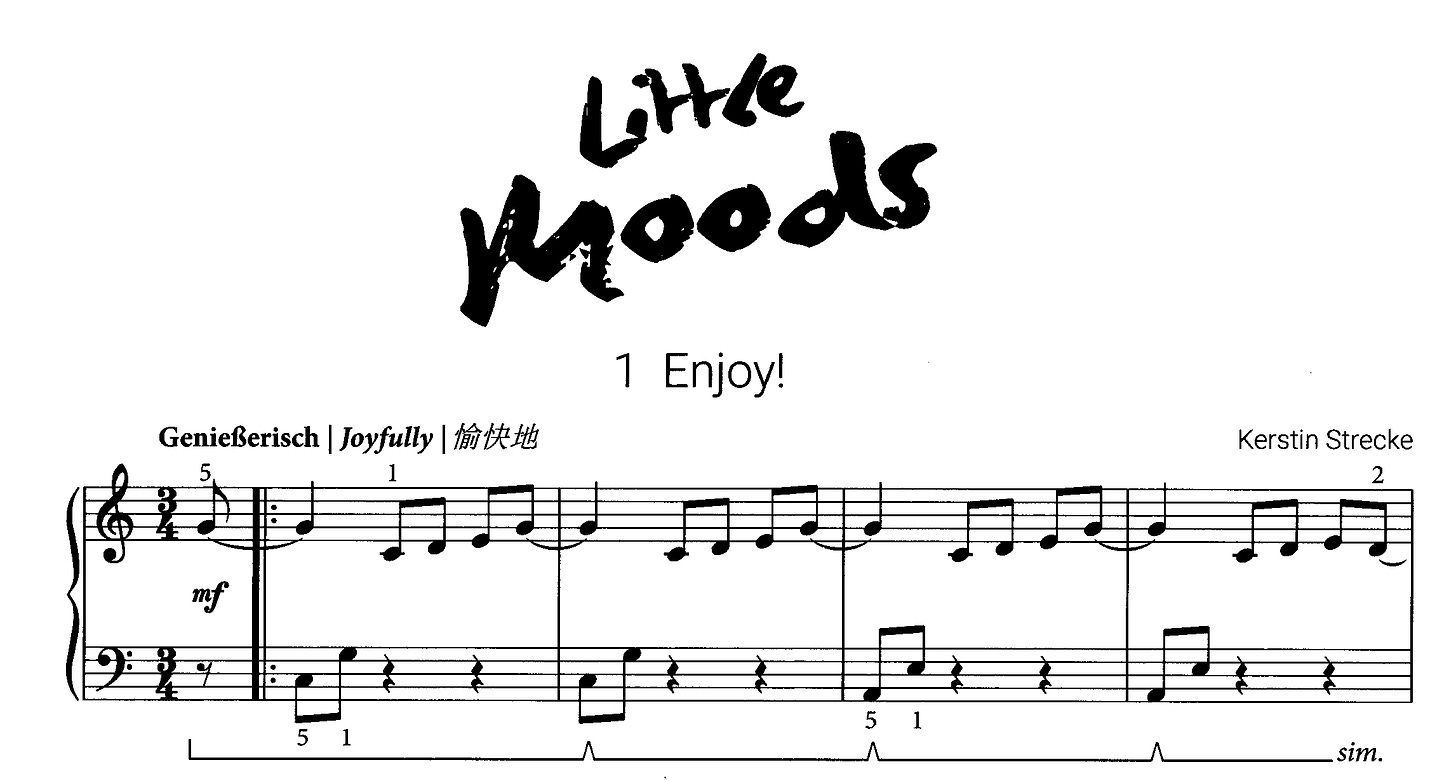"Little Moods: 15 Easy Pieces for Piano" by Kerstin Strecke
A charming springboard to creativity from Breitkopf & Härtel

This charming book by Frankfurt, Germany-based piano teacher and artist Kerstin Strecke is part of Breitkopf & Härtel’s Pädagogik series. I came across it thanks to a warm review from Andrew Eales at PianoDao.com.
Amongst other praise, Andrew wrote:
I tried out the publisher’s suggestions of transposing pieces and improvising variations, which proved enjoyable to say the least. I also think that the more imaginative, but less experienced player will be similarly able to use these pieces as a creative launchpad, and that Strecke’s music offers an ideal playground for nurturing a musically engaged, forward looking and inspiring approach.
I’m happy to say that I wholeheartedly agree. The pedagogical approach reminds me of Alison Mathew’s excellent books Doodles, but where there the pieces are very short (perfect for a quick study), Strecke’s are full compositions, usually 16 bars long, which allows for a longer focus.
Doodles by Alison Mathews
Alison Mathews’ Doodles: Easy Reading Pieces for Piano in 4 Difficulty Levels is an extremely effective resource for teaching musicianship and creativity. I’ve used it many times, and it’s a big hit with my students. What differentiates Doodles from the many other note-reading books out there is that it is filled with creative suggestions for how to chan…
In the introduction, the composer writes:
The fifteen small compositions in this book are meant to awaken devotion within us. With a few exceptions, they sound so round and yet are so easy to play that even the reluctant ones can easily commit to them. The book is very well suited for practising sight-reading. If you are brave and willing to experiment, you can also try to transpose the pieces into other keys or use them as an inspiration for your own improvisations.
Most of the pieces are roughly UK Grade 1 level so as a book of quick studies and/or impulses for improvisation, Little Moods would suit students who are roughly UK Grade 3-4. At the end of the book are notes in German, English and Chinese on how best to learn the piece and ideas for how to vary it.
In terms of the pieces, I particularly like “Weird Thing” which is, just as the title indicates, an entertainingly odd little piece; “Summer Clouds”, which is a lovely gentle landscape in 6/8 time; “Pinwheels”, a charming piece in D major where the left hand leaps above and below the right; and the opening piece “Enjoy!”, which is a minimalist treat.
To help your students get creative with “Enjoy!”, I’ve put together one of my Creative Introductions, which I’ll be sharing next week — watch this space!
Conclusion
This book is a little treasure chest, whether you use it for quick studies or as a source of ideas for creativity. The invitation to get creative sets a fantastic example for other composers and publishers, and I hope we’ll see more books with similar tips in future.






